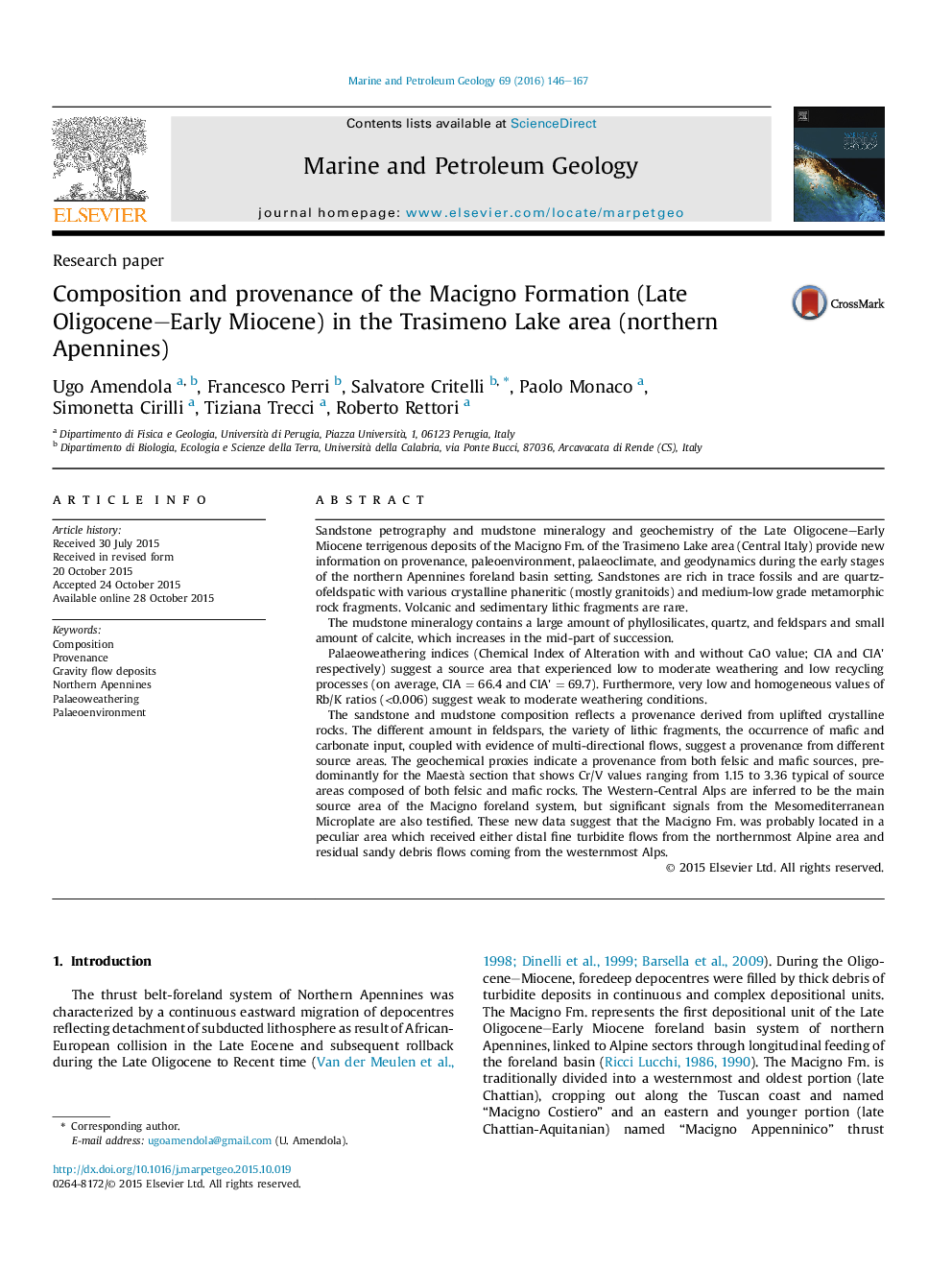| کد مقاله | کد نشریه | سال انتشار | مقاله انگلیسی | نسخه تمام متن |
|---|---|---|---|---|
| 4695471 | 1637158 | 2016 | 22 صفحه PDF | دانلود رایگان |

• The Macigno Formation of Trasimeno Lake area (Italy) has been studied.
• Sandstone petrography and mudrock mineralogy and geochemistry have been used.
• New information on provenance, paleoenvironment, palaeoclimate and geodynamics.
• Sandstone and mudstone composition reflects a provenance from a mixed source.
• Palaeoweathering indices suggest low-moderate conditions for the source area(s).
Sandstone petrography and mudstone mineralogy and geochemistry of the Late Oligocene–Early Miocene terrigenous deposits of the Macigno Fm. of the Trasimeno Lake area (Central Italy) provide new information on provenance, paleoenvironment, palaeoclimate, and geodynamics during the early stages of the northern Apennines foreland basin setting. Sandstones are rich in trace fossils and are quartzofeldspatic with various crystalline phaneritic (mostly granitoids) and medium-low grade metamorphic rock fragments. Volcanic and sedimentary lithic fragments are rare.The mudstone mineralogy contains a large amount of phyllosilicates, quartz, and feldspars and small amount of calcite, which increases in the mid-part of succession.Palaeoweathering indices (Chemical Index of Alteration with and without CaO value; CIA and CIA' respectively) suggest a source area that experienced low to moderate weathering and low recycling processes (on average, CIA = 66.4 and CIA' = 69.7). Furthermore, very low and homogeneous values of Rb/K ratios (<0.006) suggest weak to moderate weathering conditions.The sandstone and mudstone composition reflects a provenance derived from uplifted crystalline rocks. The different amount in feldspars, the variety of lithic fragments, the occurrence of mafic and carbonate input, coupled with evidence of multi-directional flows, suggest a provenance from different source areas. The geochemical proxies indicate a provenance from both felsic and mafic sources, predominantly for the Maestà section that shows Cr/V values ranging from 1.15 to 3.36 typical of source areas composed of both felsic and mafic rocks. The Western-Central Alps are inferred to be the main source area of the Macigno foreland system, but significant signals from the Mesomediterranean Microplate are also testified. These new data suggest that the Macigno Fm. was probably located in a peculiar area which received either distal fine turbidite flows from the northernmost Alpine area and residual sandy debris flows coming from the westernmost Alps.
Journal: Marine and Petroleum Geology - Volume 69, January 2016, Pages 146–167